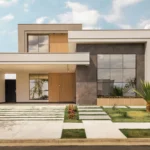Embarking on an architectural project involves a multifaceted process that transforms ideas into tangible structures. Understanding each phase ensures a collaborative and successful project outcome.en.wikipedia.org
- Pre-Design (Programming):
Define the project’s scope, objectives, budget, and timeline. This phase involves gathering information and understanding the client’s vision and requirements.
- Schematic Design:
Develop preliminary designs, including sketches and conceptual drawings, to explore different layouts and forms. Client feedback is integral to refining the design direction.
- Design Development:
Refine the approved schematic design by adding detailed specifications, materials, and systems. This phase ensures that all aspects align with the project’s goals and regulatory requirements.
- Construction Documents:
Prepare comprehensive drawings and specifications that contractors will use for construction. These documents serve as the project’s blueprint, detailing every component.
- Bidding and Negotiation:
Solicit bids from contractors and negotiate terms to select the most suitable team for the project. This phase ensures alignment with budget and quality expectations.
- Construction Administration:
Oversee the construction process to ensure adherence to plans, address unforeseen issues, and maintain quality control. Regular site visits and meetings facilitate smooth progress.
- Project Closeout:
Conduct final inspections, address any deficiencies, and ensure all project aspects are completed satisfactorily. The client receives all necessary documentation and warranties.
Understanding this process fosters transparency and collaboration, leading to successful architectural projects that fulfill client aspirations.







